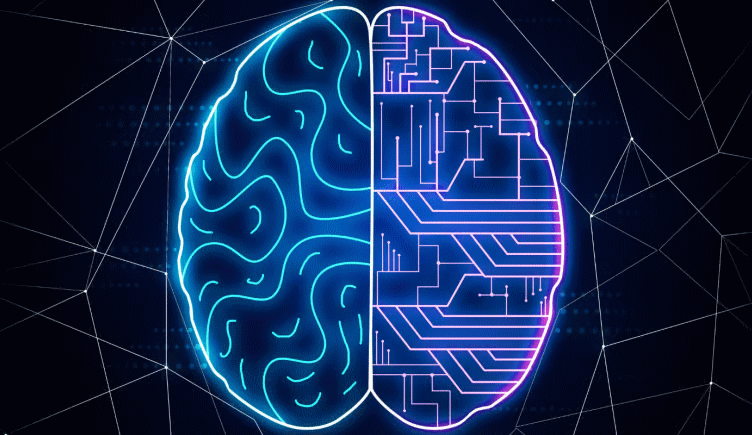
ChatGPT-4: The Future of Conversational AI
ChatGPT-4 is the latest iteration of OpenAI’s conversational AI model, set to revolutionize the way you interact with machines. With over 175 billion parameters, ChatGPT-4 is the largest and most powerful language model ever created, capable of generating human responses to a wide range of queries. Basically, ChatGPT-4 is designed to understand natural language and generate responses that are indistinguishable from human responses. This means it can be used for various applications, from customer service to virtual assistants and beyond. One of the main advantages of ChatGPT-4 is the ability to learn from huge amounts of data. By analyzing large data sets of human language, the model can understand the nuances of language and generate contextual and grammatically correct answers. This ability to learn from data also means that ChatGPT-4 can be tailored to specific use cases. For example, it can be trained in industry-specific terminology and jargon to provide more accurate answers in that area. Another benefit of ChatGPT-4 is the ability to generate replies that are consistent in tone and style. This means it can be used to create chatbots and virtual assistants that enable seamless conversations without the annoying transitions that can occur when multiple people are involved in a conversation. The uses of ChatGPT-4 are practically endless. It can be used to create chatbots that provide customer support across many industries, from healthcare to finance. It can also be used to create virtual assistants to help people with everyday tasks like scheduling appointments or ordering groceries. However, the development of ChatGPT-4 also raises concerns about the impact of AI on society. Some experts fear that conversational AI models like ChatGPT-4 will make it easier for bad actors to spread disinformation or manipulate public opinion. Others fear losing their jobs as AI becomes increasingly able to perform tasks traditionally done by humans. Despite these concerns, the development of conversational AI models like ChatGPT-4 is an exciting development in AI. It has the potential to transform the way we interact with technology and create new opportunities for businesses and individuals. As with any technological advance, it is important to approach the development of conversational AI with caution and consider its potential impact on society. However, with proper regulation and oversight, ChatGPT-4 and other conversational AI models could usher in a new era of human-computer interaction, where machines truly understand human speech and respond in ways once thought impossible.

Exploring the different types of machine learning algorithms and their applications
Machine learning is an area of ​​artificial intelligence (AI) that teaches machines to learn from data and make predictions or decisions without explicit programming. There are different types of machine learning algorithms, each with their own approaches and uses. In this article, we’ll look at some of the more common types of machine learning algorithms and how to use them. Supervised learning is a type of machine learning algorithm that uses labeled data to train a model to make predictions or decisions. The algorithm learns from tagged data and identifies patterns and relationships between the input variables (features) and the output variable (tag).Supervised learning algorithms include linear regression, logistic regression, decision trees, and auxiliary vector machines. Supervised learning applications include image recognition, speech recognition, and fraud detection. Unsupervised learning is a type of machine learning algorithm that uses unlabeled data to identify patterns and relationships in the data. The algorithm learns from the data by grouping similar data points together or finding principal components that best represent the data. Unsupervised learning algorithms include k-means clustering, hierarchical clustering, and principal component analysis (PCA).Unsupervised learning applications include customer segmentation, anomaly detection, and image compression. Semi-supervised learning is a type of machine learning algorithm that uses a combination of labeled and unlabeled data to train a model. The algorithm learns from labeled data and uses the unlabeled data to improve model accuracy. Semi-supervised learning algorithms include self-learning and co-learning. Semi-supervised learning applications include speech recognition and natural language processing. Reinforcement Learning is a type of machine learning algorithm that trains a model to make decisions based on rewards and punishments. The algorithm learns by interacting with the environment and receiving feedback in the form of rewards or penalties. Reinforcement learning algorithms include Q-Learning, Policy Gradients, and Actor Critical Algorithms. Reinforcement learning applications include games, robotics, and autonomous driving. Deep Learning is a type of machine learning algorithm that trains deep neural networks to learn from data.Deep neural networks consist of multiple layers of interconnected nodes that can learn increasingly complex representations of input data. Deep learning algorithms include convolutional neural networks (CNNs), recursive neural networks (RNNs), and generative adversarial networks (GANs). Deep learning applications include image recognition, speech recognition, and natural language processing.1. Supervised Learning:
2. Unsupervised Learning:
3. Semi-Supervised learning:
4. Reinforcement Learning:
5. Deep Learning:

5 Ways to Improve Your Coding Skills
As a programmer, you are constantly trying to improve your programming skills. Whether you are a beginner or a seasoned pro, there is always room for growth and development. Here are five ways you can improve your programming skills:
1. Read Code
Reading other people’s code is a great way to learn new programming techniques and best practices. Open source projects can be found on GitHub and other code sharing platforms. Take the time to research how other developers solve problems and build their code.
2. Write Code
The best way to improve your programming skills is to write code. An important part. Find time each day to work on personal projects or get involved in open source projects. The more code you write, the better you become.
3. Attend meetings and conferences
Attending meetings and conferences is a great way to connect with other programmers and learn new skills.Get to know new tools and technologies and be inspired by talks and presentations by experienced programmers.
4. Practice Test-Driven Development
Development based on field tests Test-Driven Development (TDD) is a coding technique that involves writing tests before writing any code. This technique can help you write more reliable and maintainable code. By practicing TDD, you learn to write tests that cover all possible scenarios and to write code that passes those tests.
5. Get Feedback
Getting feedback on your code is important to improve your programming skills.Find a mentor or collaborator who can review your code and offer constructive criticism. Take their feedback seriously and use it to improve your coding practices.

What is ChatGPT?
ChatGPT is a large language model developed by OpenAI. It is a machine learning model trained on a huge amount of text data, which enables it to understand and generate human speech. ChatGPT’s main function is to help users generate text likes based on their suggestions. ChatGPT is able to understand and respond to different types of questions and suggestions, e.g. to answer questions, generate text and provide information on a variety of topics. ChatGPT has been trained on a wide variety of texts, so it can provide answers and information on a variety of topics ranging from science and technology to literature and history. ChatGPT is constantly being updated and refined to improve its performance and provide more accurate and useful answers. ChatGPT knowledge limit is 2021, so it may not contain the latest events or updates on some topics. One of the main strengths of ChatGPT is the ability to generate human-like text that can be used for a variety of purposes, e.g. For example, writing articles, writing emails, and creating chatbot conversations. He is also able to understand and answer more complex questions and suggestions, such as: Writing articles like this one. Fun fact is that ChatGPT wrote this article to give you a glimpse of who it is and what it can do.

Who am I? & The Purpose of My Blog Website
My name is Sadra and I’m a front-end and game developer with a passion for rap music and video games. I am driven by the desire to create and bring my ideas to life through programming. When I’m not coding, I play games or listen to my favorite rappers. My adventure in the technology industry began with a passion for video games and a desire to understand how they were created. That started my passion for coding and programming, and since then I’ve focused my career towards becoming a proficient game developer and frontend. My happiness comes from helping others, both through my work and in my personal life. I enjoy finding solutions to problems and seeing the positive impact my work has on others. In addition to my passion for programming, I am also interested in rap and video games. These interests give me a well-deserved break from the demanding nature of my job and allow me to re-energize and reorient myself. I believe it is important to have hobbies and interests outside of work as they help maintain a healthy balance in life and prevent burnout. I hope that through my blog I can share my experiences, observations and knowledge and inspire others to pursue their passions and interests. Whether you’re new to tech or an experienced developer, I hope my blog inspires and supports you on your journey. Join me on this journey of self-discovery and growth as I share my experiences, ideas and knowledge with you. I can’t wait to get in touch with you and see where this journey takes us! Blogs have become a popular platform for people to share thoughts, ideas, and experiences with the world. My blog is meant to be a place where I can document my journey of self-discovery and share what I’ve learned with others. Throughout life I have come to realize the importance of self-reflection and growth. I believe that we all have the ability to learn, grow and evolve as individuals, and through this process we can become the best version of ourselves. My blog will serve as a platform for me to share my thoughts, challenges, and insights on my personal journey of self-discovery and growth. One of the main goals of my blog is to inspire others to embark on a journey of self-discovery. I intend to share my experiences and what I’ve learned along the way in a relevant and accessible way so others can see that self-discovery is a process anyone can do. I believe that by sharing my journey I can help others to understand that they too can grow and develop and that they don’t have to go through this process alone. In addition to sharing my personal experiences, my blog will also feature articles and resources on topics such as mindfulness, self-care, and self-development. I will try to provide valuable information and insights that will help others on their journey of self-discovery. As I continue to explore my passions and develop my interests, I hope to share my experiences and ideas with my readers. Whether it’s writing about my experiences with mindfulness, sharing my love of nature and the outdoors, or discussing the books and podcasts that have inspired me, I strive to create a space that is both informative and entertaining is to read.Who am I:
The Purpose of My Blog Website:
